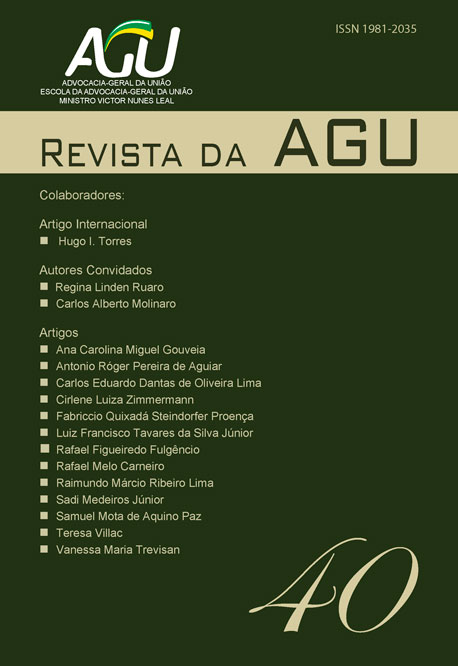ACOPLAMENTO ENTRE INTERNET E SOCIEDADE
DOI:
https://doi.org/10.25109/2525-328X.v.13.n.40.2014.405Palavras-chave:
Internet. Determinismo. Ator-Rede. Ciência e Tecnologia. Sociedade e Direito.Resumo
Este ensaio intenta demonstrar a importância da relação entre Internet e Sociedade. Em realidade, a demonstração de uma relação parcial entre a tecnologia moderna e a sociedade. A maneira pela qual se intenta abordar essa relação, pode ser encontrada entre as preocupações dos chamados estudos sociais da tecnologia. Dada a estreita relação entre a ciência e tecnologia, os estudos sociais da tecnologia estão diretamente relacionados aos chamados estudos sociais da ciência, incluindo-se aí as ciências jurídicas.Referências
BIJKER, W. E. & LAW, J. General introduction. In: W. E. Bijker & J. Law (Eds.), Shaping technology/building society: Studies in sociotechnical change (pp. 1-19). Cambridge, MA: The MIT Press, 1997.
BLOOR, David. Knowledge and Social Imagery. Chicago: Univ. of Chicago Press, 1991.
BOHNE, Eberhard. Langfristige Entwicklungstendenzen im
Umwelt- und Technikrecht, in: SCHMIDT-AßMANN, Eberhard; HOFFMANN-RIEM, Wolfgang (Hrsg.): Strukturen des Europäischen Verwaltungsrechts. Baden-Baden: Nomos 1999.
CHRISTOFOROU, Theofanis. The Precautionary Principle, Risk Assessment, and the Comparative Role of Science in the European Community and the US Legal Systems, in: Norman J. Vig e Michael G. Faure (eds), Green Giants? Environmental Policies of the United States and the European Union, Cambridge, MA/London: MIT Press, 2004.
CRANOR, Carl F. Toxic Torts - Science, Law and the Possibility of Justice. Cambridge/New York: Cambridge University Press, 2006.
DOUGLAS, Mary; WILDAVSKY, Aaron.; Risk and culture: an essay on the selection of technological end environmental dangers. Berkeley/ Los Angeles: University of California Press, 1983.
EDGEWORTH, Brendan. Law, modernity, postmodernity: legal change in the contracting state. Hampshire, Ashgate, 2003.
EMMECHE, Claus. The biosemiotics of emergent properties in a pluralist ontology, in: TABORSKY, Edwina. Semiosis, Evolution, Energy: towards a Recognition of the Sign. Aachen: Shaker Verlag, 1999.
FAIGMAN, David, L. Laboratory of Justice: The Supreme Court’s 200-Year Struggle to Integrate Science and the Law, New York: Henry Holt, 2004.
HOFFMEYER, Jesper. Signs of Meaning in the Universe (Advances in Semioticis). Bloomington/Indianapolis: Indiana University Press, 1966.
HUGHES, Thomas P. Networks of Power: electrification in western Society, 1880–1930. 2ª Reimpressão, Baltimore [Maryland]: Johns Hopkins University Press, 1988.
______. The evolution of large technological systems. In: Wiebe E. Bijker, Thomas P. Hughes & Trevor Pinch (eds.), The Social Construction of Technological Systems. Cambridge, MA, & London: The MIT Press, 1987.
JASANOFF, Sheila. Law’s Knowledge: Science for Justice in: Legal Settings, American Journal of Public Health, v. 95, 2005; in: <http://www.defendingscience.org/upload/JasanoffKNOWLEDGE.pdf>.
______. Designs on Nature: Science and Democracy in: Europe and the United States. Princeton/Oxford: Princeton University Press, 2005.
JONES, Barrjy. Sleepers, Wake! Technology and the Future of Work. Melbourne: Oxford University Press, 1990.
LATOUR, Bruno. Science in Action. Cambridge, Mass.: Harvard Univ. Press, 1987.
LAW, J. & BIJKER, W. E. Postscript: Technology, Stability, and Social Theory. In: W. E. Bijker & J. Law (Eds.), Shaping technology/building society: Studies in sociotechnical change. Cambridge, MA: The MIT Press, 1997.
MAILLARD, Jean; DE MAILLARD, Camille. La responsabilité juridique. Paris: Flamarion, 1999.
MERTON, Robert K. The Sociology of Science: Theoretical and Empirical Investigations (N.W. Storer, Ed.). Chicago: University of Chicago Press, 1973.
PARDO, José Esteve. Técnica, Riesgo y Derecho – tratamiento del riesgo tecnológico en el Derecho Ambiental. Barcelona: Ariel Derecho, 1999.
PINCH, Trevor; BIJKER, Wiebe. The Social Construction of Facts and Artefacts: or How the Sociology of Science and the Sociology of Technology Might Benefit Each Other, em: Social Studies of Science, v.14, n. 3, 1984, in: <http://ssegs.sagepub.com
/cgi/content/short/14/3/399>.
STRAUB, Evan T. Understanding technology adoption: A review of theory and future directions for informal learning with technology. Review of Education Research, 79(2), 2009; in: http://rer.sagepub.com/cgi/reprint/79/2/625).
UEXKÜLL, Jakob Von. The Theory of Meaning, in: <http://www.reference-global.com/doi/abs/10.1515/semi.1982.42.1.25>.
VESENTINI, José William. Sociedade e Espaço: geografia geral e do Brasil. São Paulo: Ática, 2005.
WHITE, Leslie A. The Science of Culture: A Study of Man and Civilization. New York: Grove Press, 1949.
WOOLGAR, Steve. Science: The Very Idea. London: Routledge, 1988.
Downloads
Publicado
Como Citar
Edição
Seção
Licença
Copyright (c) 2018 REVISTA DA AGU

Este trabalho está licenciado sob uma licença Creative Commons Attribution-NonCommercial-NoDerivatives 4.0 International License.
Autores que publicam nesta Revista concordam com os seguintes termos:
- os autores mantêm os direitos autorais e concedem à Revista da AGU o direito de primeira publicação;
- os autores têm autorização para assumir contratos adicionais separadamente, para distribuição não exclusiva da versão do trabalho publicada nesta Revista (ex.: publicar em repositório institucional ou como capítulo de livro), com reconhecimento de autoria e publicação inicial nesta Revista.

